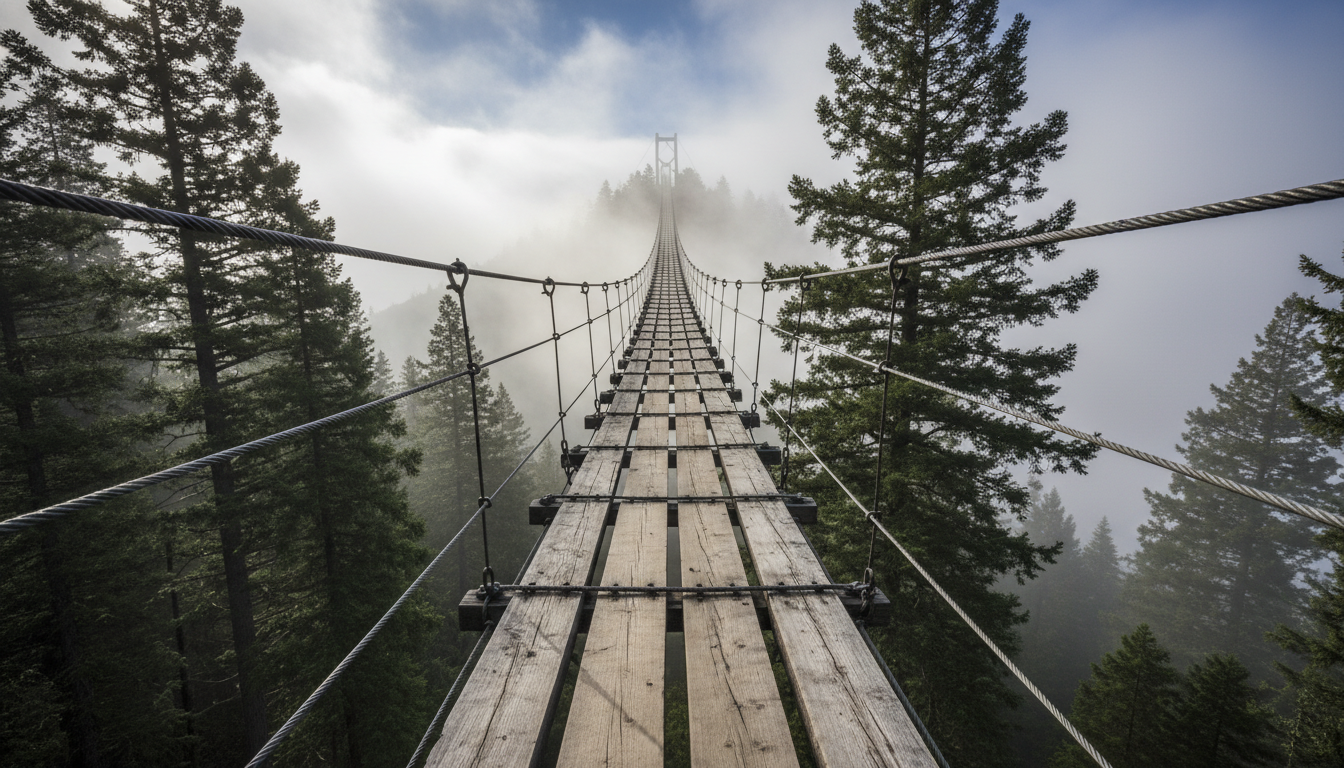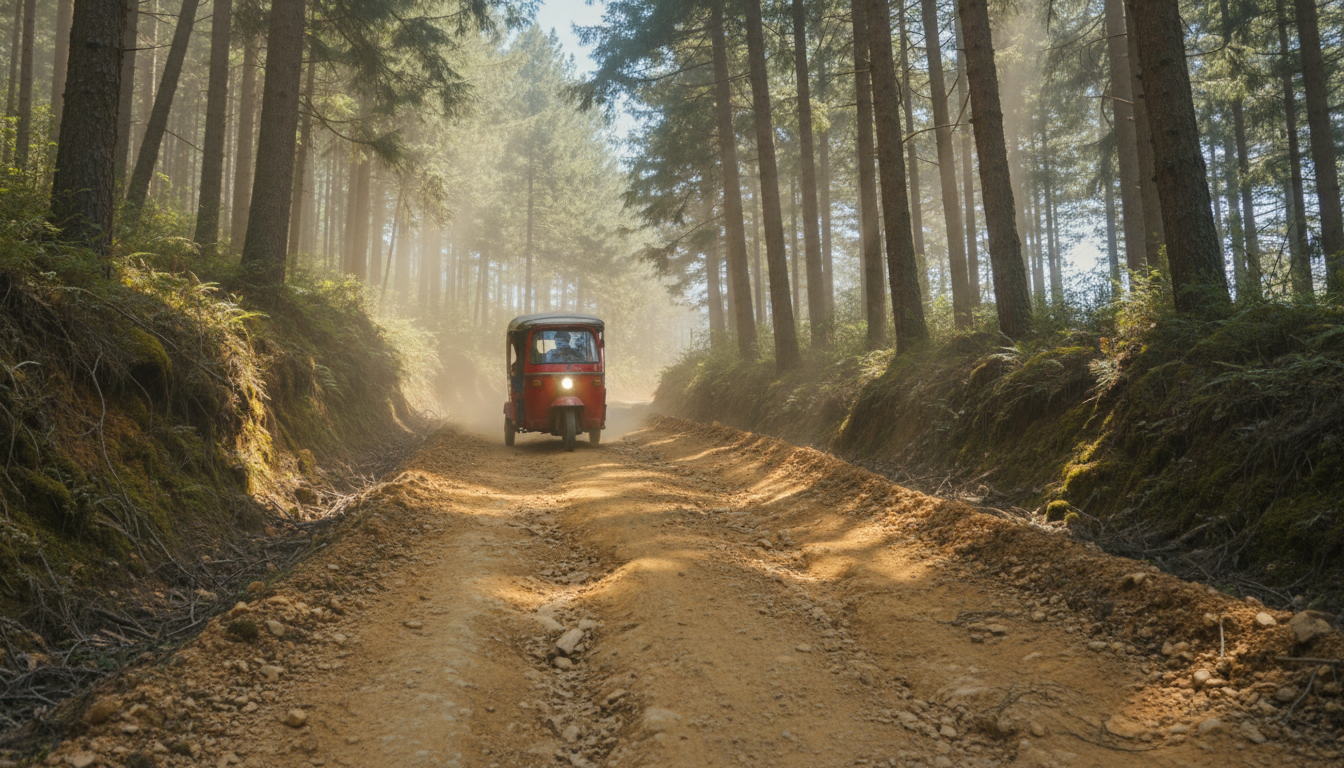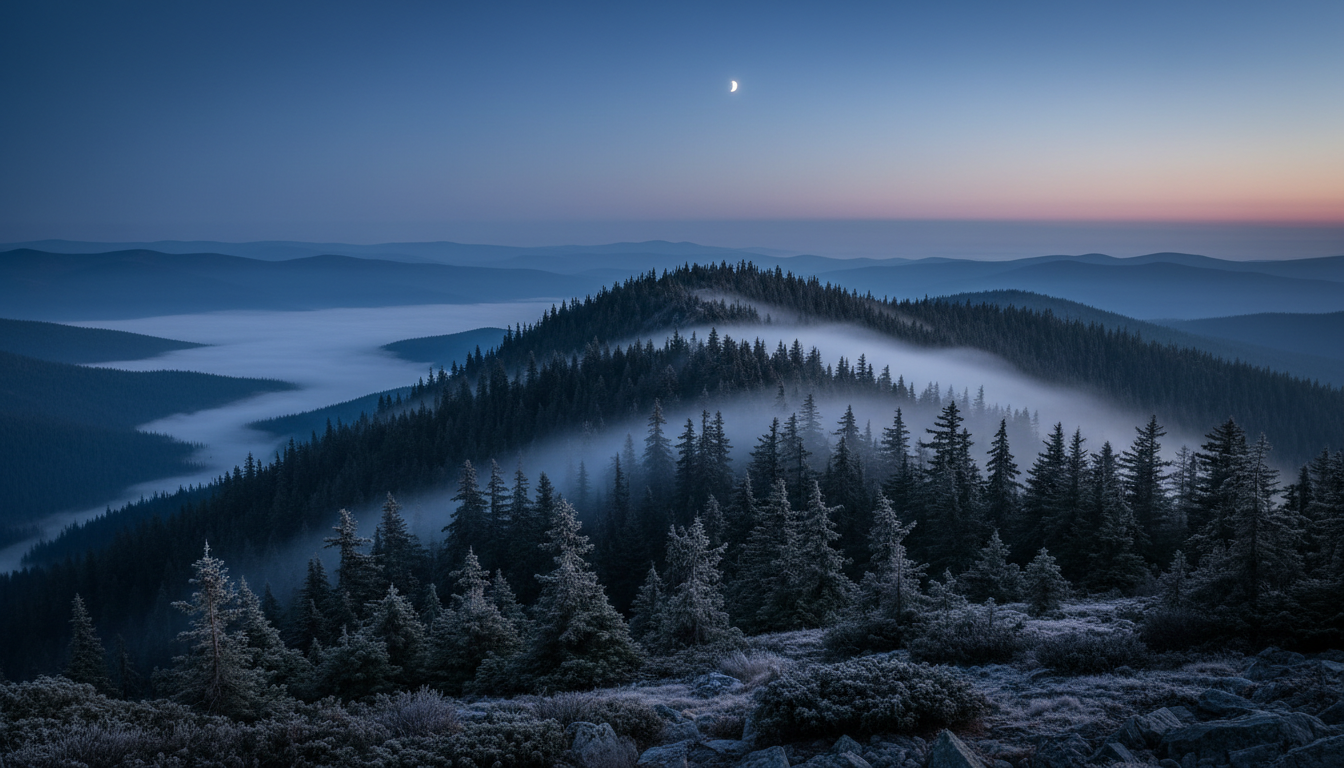
Crossing the Puente Colgante Cuajimoloyas (Suspension Bridge)
Crossing the Puente Colgante Cuajimoloyas: A Guide to Oaxaca’s Highest Suspension Bridge
The first thing you notice when stepping out of the car in Cuajimoloyas isn’t the view—it’s the air. At over 3,200 meters (10,500 feet) above sea level, the oxygen feels thin, brisk, and significantly colder than the valley floor of Oaxaca City.
While many travelers head to the Sierra Norte for hiking trails, the undisputed crown jewel of the El Mirador “Yaa-Cuetzi” ecotourism park is the suspension bridge. It is one of the highest accessible adventure points in the entire state.
However, this isn’t just a scenic lookout. The region is defined by its neblina (fog). Walk across early in the morning, and you might see for miles. Arrive in the afternoon, and the bridge often disappears entirely into the white mist, turning a simple crossing into an ethereal walk through the clouds.
This adrenaline-filled stop is a highlight of the broader circuit detailed in our Ultimate Guide to Hiking the Pueblos Mancomunados.

What to Expect at the Cuajimoloyas Suspension Bridge
Many guidebooks simply describe the bridge as “high,” but that misses the nuance of the experience. Unlike its neighbor in Benito Juárez, which spans a sheer vertical drop over a canyon, the thrill at Cuajimoloyas is about instability.
The bridge stretches roughly 150 meters over jagged rocks and the tops of massive pine trees. It is narrow—strictly single file—and has a significant “swing” factor. When the winds whip over the ridge, or when fellow hikers step heavily, the entire structure sways.
For those with vertigo, the strategy is simple: look out, not down. The floorboards have gaps between them, offering dizzying glimpses of the forest floor below.
If you catch a clear morning (typically December through February), the horizon opens up dramatically. According to verified TripAdvisor reviews, lucky hikers can spot the snow-capped peak of Pico de Orizaba—Mexico’s highest mountain—in the distance.
Conversely, if you want the “spooky” cloud forest aesthetic, plan your crossing for after 1:00 PM. The official Expediciones Sierra Norte guidance notes that the fog usually rolls in thick by midday, obscuring the panoramic views of the Valles Centrales but creating a moody, mystical atmosphere.

How to Reach the Bridge (The Hike to El Mirador)
There is a critical logistical step that trips up many independent travelers: You cannot drive straight to the bridge.
The bridge is located at the “Yaa-Cuetzi” viewpoint, but access is controlled. You must first go to the Community Ecotourism Office in the center of Cuajimoloyas town to register and purchase your wristband.
From the office, the journey to the bridge is about 1 kilometer uphill. While short, the hike can be “lung-busting” for those not acclimated to the 3,200-meter elevation.
Your transport options are:
- Hike: A sharp, uphill walk through the town and forest edge.
- Drive: You can take your own car up the dirt track. It is bumpy but passable for standard sedans.
- Moto-Taxi: Park your car in town and hire a local tuk-tuk. This saves your car’s suspension on the rocky road and puts money directly into the local economy.
For detailed transport info on getting to the village itself, consult our Cuajimoloyas Travel Guide to explore the Mushroom Capital of Oaxaca.

Entrance Fees and Hours: El Mirador Sierra Norte Cost
Understanding the el mirador sierra norte cost structure can be confusing because there are often two separate fees involved.
Based on current Sierra Norte contact information, you should budget for:
- General Community Entrance: Approximately $50 - $100 MXN. This grants you access to the village trails and ecosystem.
- Activity Package (Bridge + Zip Line): This is an add-on, usually costing between $150 - $200 MXN per person.
CRITICAL WARNING: This is a CASH ONLY destination. There are no ATMs in Cuajimoloyas. You must withdraw sufficient cash in Oaxaca City or Tlacolula before you ascend the mountain. Keep your ticket stub accessible at all times; park rangers stationed at the bridge trailhead will ask to see it before letting you cross.

The Cuajimoloyas Zip Line (Tirolesa) Experience
The attraction is designed as a circuit. You generally do not walk back across the bridge once you reach the other side.
The standard flow involves crossing the suspension bridge one-way to reach the high “Torre” (Tower). From there, you strap into the cuajimoloyas zip line, which runs roughly 1 kilometer back to the starting point near the parking area. It is one of the longest zip lines in the Sierra Norte region.
If you choose not to do the zip line, you will have to hike down a trail from the tower. Walking backwards on the bridge is generally prohibited if there is any oncoming pedestrian traffic.
Safety Note: The launch tower is exposed to the elements. The wind here can be ferocious. As noted by general safety guidelines on Oaxaca Travel, you should secure hats, glasses, and loose items in a backpack before climbing the tower ladder.

Cuajimoloyas vs. Benito Juárez: Which Bridge is Better?
Travelers constrained by time often ask which bridge is the “better” experience. The answer depends on what kind of thrill you want.
- Cuajimoloyas: This is the “Cloud Forest” choice. It is higher, colder, and feels more mystical. The bridge crosses over treetops and rocks. The surrounding park (El Mirador) has flat areas that are excellent for families who want to picnic after the thrill.
- Benito Juárez: Located 30 minutes away, this bridge is technically lower in altitude but spans a deep hollow ravine. It triggers intense vertical vertigo and feels “scarier” because of the sheer drop below you.
Our Recommendation: If you are hiking the “Coast to Coast” or circular route, start with the adrenaline shock of Benito Juárez, then hike up to Cuajimoloyas to finish your day with the ethereal fog photos.
If you crave a crossing over a deeper canyon, you might prefer braving the Benito Juárez suspension bridge instead.

Refueling After the Adrenaline
You cannot leave Cuajimoloyas without trying the local specialty: Wild Mushrooms.
While the annual Mushroom Fair happens in summer, the culinary culture persists year-round. Head to the Comedor Regional near the ecotourism office. Even in the off-season, they utilize dried fungi to create a rich, earthy Sopa de Hongos (Mushroom Soup) or Mole Rojo con Hongos.
Pair it with a piece of Pan de Yema, baked fresh daily in the community’s wood-fired ovens.
Eco-Rule: Cuajimoloyas enforces a strict ban on single-use plastics. Do not bring disposable water bottles. Instead, bring a reusable bottle; you can often refill grand garrafons at the “Centro Ecoturístico.”
You can even see what makes this dish iconic to the area by checking out our traditional Sopa de Hongos recipe.

Conclusion
The Puente Colgante Cuajimoloyas offers a different kind of adventure than the typical sunny Oaxacan excursion. It is a place of cold wind, swirling mists, and high-altitude adrenaline. Whether you come for the clear views of Pico de Orizaba or the moody walk through the clouds, it remains a safe, well-maintained, and unforgettable stop in the Sierra Norte.
After conquering the heights, consider hiking down to the canyon in the next village with our Santa Catarina Lachatao Guide.